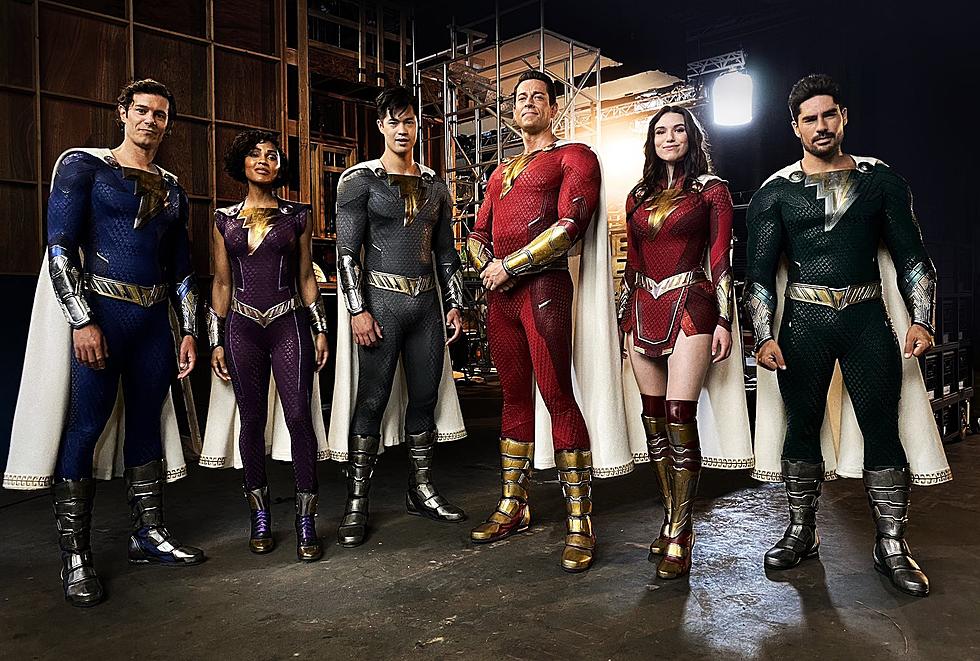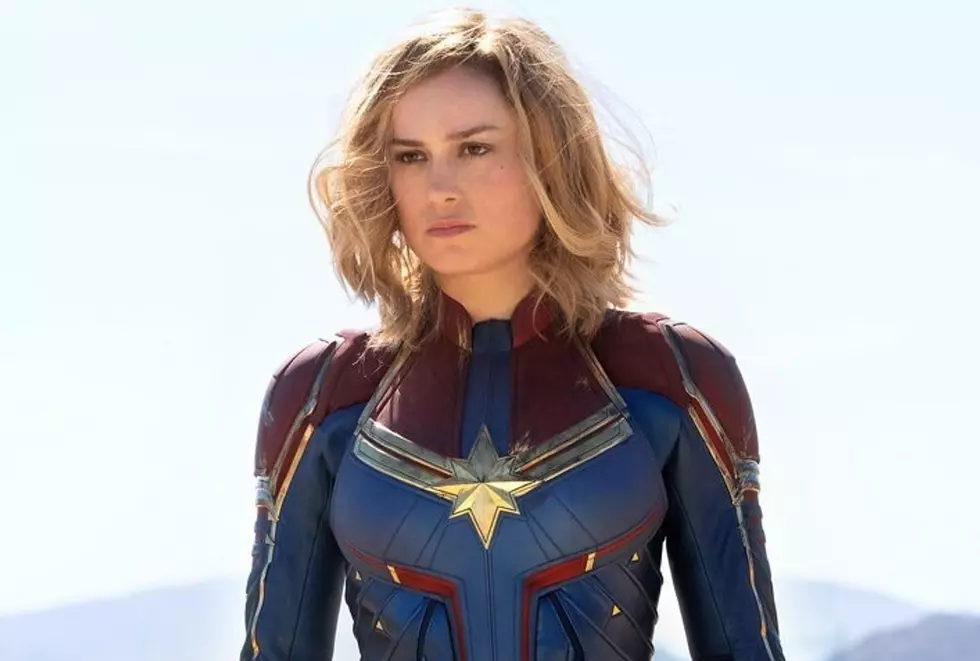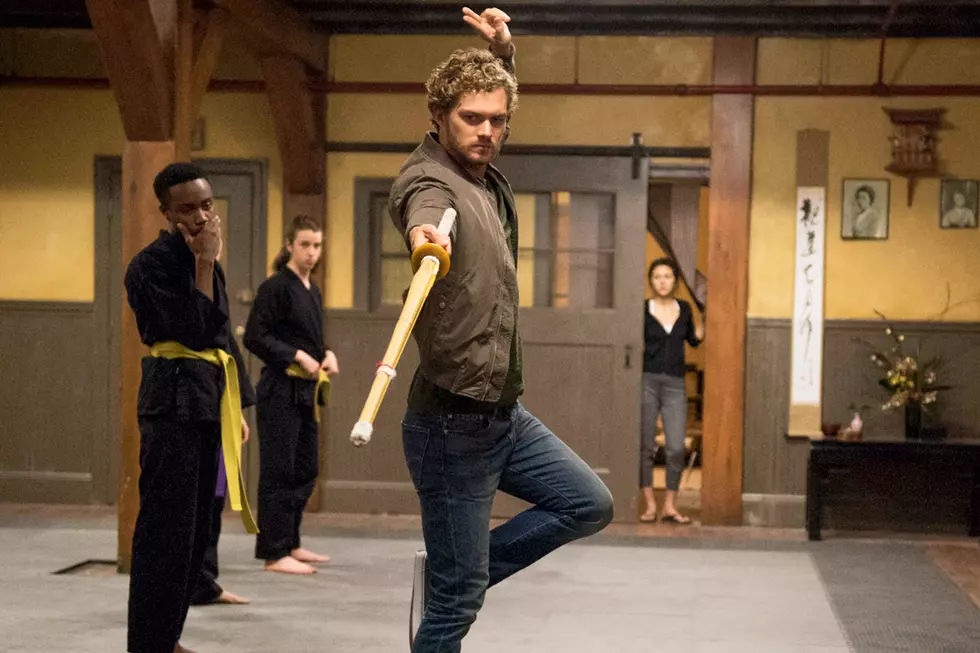
The Evolution of Shazam: Best Captain Marvel Stories by Decade
Many of comics’ most popular heroes have been around for decades, and in the case of the big names from the publisher now known as DC Comics, some have been around for a sizable chunk of a century. As these characters passed through the different historical eras known in comics as the Golden Age (the late 1930s through the early 1950s), the Silver Age (the mid 1950s through the late 1960s), the Bronze Age (the early 1970s through the mid 1980s) and on into modern times, they have experienced considerable changes in tone and portrayal that reflect the zeitgeist of the time.
With this feature we’ll help you navigate the very best stories of DC Comics’ most beloved characters decade by decade. This week, we’re taking a look at the best Captain Marvel comics.
1940s: “The Monster Society of Evil”
Captain Marvel Adventures #22-46, by Otto Binder and CC Beck
In the 1940s, Captain Marvel was the most popular superhero in America, headlining Whiz Comics and Captain Marvel Adventures (which had the largest circulation of any comic book in America at the time of its publication), with spin-off features in Master Comics, Wow Comics, Mary Marvel, Captain Marvel Jr, Marvel Family, and Hoppy the Marvel Bunny. Fawcett Publications managed to find this success by mixing the action and superheroics of rival DC Comics's Superman with the charm and whimsy of fairy tales and children at play.
The most famous Captain Marvel story of the Golden Age is “The Monster Society of Evil,” one of the first long-running serial stories in comics (over two years' worth of issues) and the first appearance of a super-villain team made up of previously existing characters. In this story, the mysterious Mister Mind assembles the greatest foes of mankind (including Hitler and Tojo themselves) in an attempt to conquer the Earth.
I have to give this disclaimer, however: despite being some of the finest crafted comics of the Golden Age, Fawcett's Marvel Family publications are not without significant flaws, most notably archaic depictions of race. As was nearly ubiquitous in comics published during the Second World War, the Japanese are depicted as unforgivably hateful caricatures. Additionally, while better intentioned, depictions of black Americans (and, notably in an early chapter of “Monster Society,” native Africans) are also regrettably stereotyped and markedly outdated. While not every Golden Age Cap story features such stereotypes and caricatures, they are not uncommon, so caveat lector.
Many (but by no means all) of the stories featured on this list are reprinted in the Shazam!: A Celebration of 75 Years hardcover collection.
Best of the rest: “Sivana for Governor” (Captain Marvel Adventures #28), “Captain Marvel vs Spy Smasher” (Whiz Comics #16-18), “Introducing Captain Marvel” (Whiz Comics #2), “Captain Marvel Introduces Mary Marvel” (Captain Marvel Adventures #18), “The Mighty Marvels Join Forces!” (Marvel Family #1), “The Plot Against the Universe” (Captain Marvel Adventures #100), “Crusher of Crime” (Whiz Comics #20), “The Vengeful Four” (Whiz Comics #21), “The Origin of Captain Marvel Jr” (Whiz Comics #25, Master Comics #21-22), “The Curse of IBAC” (Captain Marvel Adventures #8), “The Talking Tiger” (Captain Marvel Adventures #79), “One Thousand Years from Now” (Whiz Comics #41-42)
1950s: “Captain Marvel Battles the World”
Captain Marvel Adventures #148, by Otto Binder and CC Beck
As with all superhero comics, the once seemingly invincible Marvel Family empire started to flag in popularity in the years after World War II. But Captain Marvel faced an even mightier foe than reader apathy in the early '50s: Superman. No, wait, in italics: Superman. As in the publication. DC Comics, bothered by Fawcett's immense success with the Marvel Family, launched a series of lawsuits against their rival claiming that Captain Marvel was heavily inspired by Superman (which, admittedly, is true, but no more than any other superhero, really), and long story short, this resulted in Fawcett ceasing publication of all Captain Marvel and Captain Marvel-adjacent comics. The World's Mightiest Mortal finally found a foe he couldn't surmount: American copyright law.
In “Captain Marvel Battles the World,” one of the last Fawcett Captain Marvel issues, written and drawn by the classic Captain Marvel team of Binder and Beck, the title could not be more literal. The story, narrated by the planet Earth itself, shows our world getting mad at the damage humankind is doing to it and seeking revenge via global warming. The art in this large-scale battle between man and planet could not be more suitably grandiose. And, come on. Look at that great cover.
Best of the rest: “King Kull and the Seven Sins” (Captain Marvel Adventures #137), “Condemned to Die” (Marvel Family #15), “Captain Marvel and the Betrayal of Mr Morris” (Captain Marvel Adventures #108), “Captain Marvel and the Wish Factory!” (Captain Marvel Adventures #103), “Captain Marvel and the Atomic Fire” (Captain Marvel Adventures #122), “Captain Marvel Battles the Underground Mystery Menace” (Whiz Comics #145), “Captain Marvel Battles the Blackness Plague” (Marvel Family #58)
1960s: “Introducing the All-New Captain Marvel”
Captain Marvel #1, by Roger Elwood and Leon Francho
So after the settlement of the DC/Fawcett lawsuit, Captain Marvel and family spent twenty years frozen in the mysterious substance called suspendium, floating through space. But he would still be with us in our hearts. And in the numerous imitators he spawned in the 1960s.
The most notable of these would be Mar-Vell, the Kree spaceman who fell to (and in love with) Earth, published by Marvel Comics, who took several years to realize the trademark “Captain Marvel” was available for the taking. But before that would come Carl Burgos's Captain Marvel, who could separate his limbs from his body and make them fly around by shouting “SPLIT!” and make them return by shouting “XAM!” (British hero Marvelman was created as a replacement for Captain Marvel, but he debuted in the '50s, hence his absence from this section.)
Three such imitators were created by Fawcett's own lead Marvel Family writer, Otto Binder (and one of them was even drawn by Beck): Fatman, the Human Flying Saucer, whose costume was just a palette-swapped version of the Big Red Cheese; Tod Holton, Super Green Beret, who was a young man who became a super-strong soldier by donning a magic hat; and Zha-Vam the Invincible, a Superman foe who derived his powers from the heroes of classical mythology.
None of these comics are actually as good as classic Fawcett Cap, despite their best efforts.
(Pedants will note that there is another story later on this list that technically features a Captain Marvel impostor. This is me acknowledging that; feel free not to mention it in the comments.)
Best of the rest: “The Coming of Captain Marvel” (Marvel Super-Heroes #12), “Introducing Fatman, the Human Flying Saucer” (Fatman the Human Flying Saucer #1), “Zha-Vam the Invincible!” (Action Comics vol 1 #351), “The Curtain Rises” (Tod Holton, Super Green Beret #1)
1970s: “Superman vs Shazam: When Earths Collide!”
All-New Collectors' Edition #C-58, by Gerry Conway and Rich Buckler
The 1970s saw the return of the original Captain Marvel, rescued, ironically, by the same entity that put him in suspended animation in the first place: DC Comics. Looking for more superheroes to add to their line now that the genre was popular again, Carmine Infantino licensed the Marvel Family characters from Fawcett, who were legally bound never to publish the characters again. However, now that Marvel Comics held the trademark on the name Captain Marvel, the new series had to be titled Shazam!, a name with which the character would become irrevocably associated.
The new series was even drawn at first by Captain Marvel co-creator CC Beck, but the attempts to mesh his style with a new generation of Bronze Age writers met with varying degrees of success, and Beck left the book after ten issues. The series was canceled with issue #35, but the Captain Marvel feature continued as a backup in World's Finest.
The selection here is an over-sized graphic novel featuring the first full-length battle and then team-up between Superman and Captain Marvel (after they met briefly in Justice League) to save both Earth-One (Superman's Earth) and Earth-S (as the Fawcett Earth became known) from a Martian wizard.
The Bronze Age revival of Captain Marvel is collected in Showcase Presents Shazam.
Best of the rest: “The World's Mightiest Race” (Shazam #33), “Make Way for Captain Thunder” (Superman vol 1 #276), “IBAC Meets Aunt Minerva” (Shazam #29), “In the Beginning” (Shazam #1), “Backward, Turn Backward, O Time in Your Flight” (Shazam #35, World's Finest #235), “Crisis in Eternity” (Justice League of America vol 1 #135-137)
1980s: “With One Magic Word”
DC Comics Presents Annual #3, by Roy Thomas, Julius Schwartz, Joey Cavalieri, and Gil Kane
Captain Marvel would continue to appear as a backup feature in World's Finest and then Adventure Comics and to occasionally team-up with/fight Superman until Crisis on Infinite Earths reshaped DC's continuity and brought an end to Earth-S. The mini-series The New Beginning revised Cap's origin for a modern audience and integrated him more into the DC universe (and, perhaps its most lasting influence, established the idea that Cap retains Billy's personality when he transforms, which was never the case prior to this), while Cap also saw himself becoming a member of the Justice League following the Legends mini-series.
The selection here is maybe the best of the pre-Crisis Captain Marvel/Superman team-ups, as Cap's arch-enemy Dr Sivana steals the power of Shazam and goes off to fight the Supermen of two worlds.
This and several other Captain Marvel/Superman battles (including the 1970s selection) are collected in Superman vs Shazam!
Best of the rest: Shazam: The New Beginning #1-4, “The Snatching of Billy Batson” (World's Finest vol 1 #275), “Superman and Shazam” (DC Comics Presents vol 1 #49), Legends #1-6, “Thunder Over London” (All-Star Squadron #36-37), “Man and Supermarvel” (DC Comics Presents #33-34)
1990s: “The Power of Shazam!”
Attempts to launch an ongoing Captain Marvel series following The New Beginning failed after writer Roy Thomas had a falling out with DC, despite the efforts of such creators as John Byrne. Cap and family would not get a new ongoing series until 1995's Power of Shazam, which was preceded by a fully painted graphic novel, written and painted by Jerry Orday.
Power of Shazam would give Billy and the rest of the Marvel Family yet another new origin, but one that hewed a little closer to the original Fawcett comics and gave a larger role to Black Adam, who had made only one appearance in the Golden Age comics. The '90s would also see Cap more fully integrated into the DC universe, as he crossed over with Starman, Lobo, the Justice League and more, and found himself set up in his own city, now called Fawcett City.
Best of the rest: “Where Dreams End” (LEGION '91 #31), “Seduction of the Innocent” (Underworld Unleashed #3), “Lightning and Stars” (Starman #39-40, Power of Shazam! #35-36), Kingdom Come #1-4, “Things Change/The Arson Fiend” (Power of Shazam! #1-2), “Crisis Times Five” (JLA #28-31)
2000s: “The Monster Society of Evil”
Power of Shazam ended in 1999, and Captain Marvel has bounced around from title to title (and continuity to continuity) since then. Most prominently he appeared as a member of a revamped Justice Society of America, though he was frequently eclipsed by Black Adam, whose morally gray approach perhaps gelled better with modern writing sensibilities than the often perceived as old fashioned Cap. There were also a number of changes made to the Marvel/Shazam mythos in the late 2000s that were all undone by Flashpoint, so don't even worry about it.
The most significant appearances by Captain Marvel in the 2000s were in non-continuity series where he didn't have to try to fit into a world that also features Superman and Wild Dog. The best of these was a four-issue mini-series by Jeff Smith, the creator of Bone, which once again retold Cap's origin, but also retold his most famous adventure for a modern age: “The Monster Society of Evil.” As in the beginning, so in the end.
Best of the rest: Shazam!: Power of Hope, Superman/Shazam: First Thunder #1-4, Batman: The Dark Knight Strikes Again #1-3, “Enlightenment” (JSA #48), “Black Reign” (JSA #56-58, Hawkman #23-25), Day of Vengeance #1-6, Billy Batson and the Magic of SHAZAM! #1-5
And that's it for the decades we've experienced so far! The 2010s are halfway over; we'll have to see who comes out on top in five years! Good luck to anyone who wants to beat Thunderworld or Convergence: Shazam!
More From ComicsAlliance




![Five Stars: Starting At The End With Jeff Smith [Interview]](http://townsquare.media/site/622/files/2017/03/FiveStars-Smith.jpg?w=980&q=75)

![A New Team Bands Together In ‘Black Panther & The Crew’ #1 By Coates, Harvey, And Guice [Preview]](http://townsquare.media/site/622/files/2017/03/Black_Panther_The_Crew_1_Featured.jpg?w=980&q=75)


